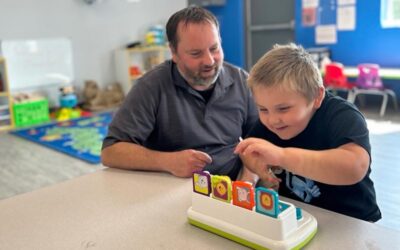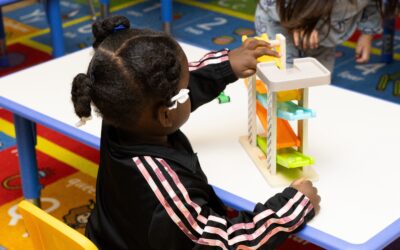Bullying is a problem that all children come into contact with in some form or another. Fortunately, education on the subject has started to make its way into the public eye as various anti-bullying events and organizations band together to bring an end to bullying nationwide. Despite those efforts, children, especially children on the autism spectrum, face daunting challenges outside of their home while navigating the social landscape. In this post, we’ll break down the ways children on the spectrum face bullying and the best ways to support them through it as parents and caregivers.
Why do children on the spectrum get bullied?
Children with intellectual, physical, neurodevelopmental, emotional and sensory disabilities are all at an increased risk of being bullied. Factors like physical vulnerability and social challenges can turn a child on the spectrum into an easy target for bullies. This is compounded if they are in an intolerant or uneducated environment. For example, if you’re unaware of any anti-bullying movements or education at your child’s school, your child could be at an increased risk to be the target of bullying.
All-in all, the “why” can be answered with a relatively simple answer, bullying happens because of ignorance and a lack of proper support and education for both bullies and the bullied.
What form does bullying take?
The term bullying covers various forms of harassment. A study published on bullying at Indiana University Bloomington breaks it down as the following, “There are various forms of bullying, including verbal, physical, emotional, educational, and property destruction. A growing area for bullying is cyberbullying, in which Facebook, email, Twitter, and other forms of social media are used to spread unkind and often untruthful information about students.” For children on the spectrum, they can face bullying in school by being forcibly isolated, teased for their symptoms or physically harmed by their peers.
How to spot bullying?
StopBullying.gov breaks the warning signs down as follows:
- Unexplainable injuries
- Lost or destroyed clothing, books, electronics, or jewelry
- Frequent headaches or stomach aches, feeling sick or faking illness
- Changes in eating habits, like suddenly skipping meals or binge eating. Kids may come home from school hungry because they did not eat lunch.
- Difficulty sleeping or frequent nightmares
- Declining grades, loss of interest in schoolwork, or not wanting to go to school
- Sudden loss of friends or avoidance of social situations
- Feelings of helplessness or decreased self esteem
- Self-destructive behaviors such as running away from home, harming themselves, or talking about suicide
Spotting the signs can be especially difficult in a child with autism, as they may experience some of the above as a result of their symptoms, not as a sign of being bullied. In those cases, it is best to consult a trusted adult, such as your child’s teacher or counselor, as they can observe the signs you may miss while your child is in school.
How to support your child on the spectrum
There are several things you can do to support your child. Whether you suspect they are being bullied, bullying others or simply to educate them, we recommend you:
- Take the the time to communicate to your child, their teachers, counselors and peers about your concerns. Educate those around you on the dangers of bullying and how to spot it.
- Get connected to your child’s school to either join or establish an anti-bullying movement. The resources available online and elsewhere are plentiful, and spreading the word through your child’s environment will help protect them and their peers.
- Work with your child’s teacher to implement high-interest and team-based activities in the classroom to build empathy and trust between the classmates.
- Find out who your children’s closest companions are, have contact with them and their parent or guardian to build a far-reaching network of support.
Schedule time to consult with your child about how they are feeling about their relationships to their peers, and what concerns they have if any.
Though this may seem like a lot, at the very root of these solutions is communication. With open and honest communication with the people you and your child come into contact with, you can build an environment that they can thrive in. Please visit StopBullying.gov for a detailed fact sheet on how best to get support for your child on the spectrum.
For more autism-related tips and news, be sure to keep up with us on our Facebook, Twitter and Instagram and feel free to reach out via our contact page to learn more about our services.



